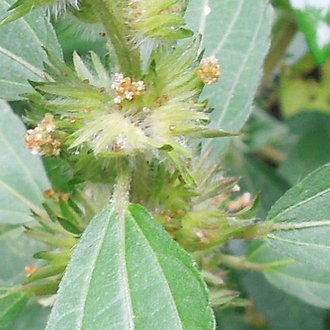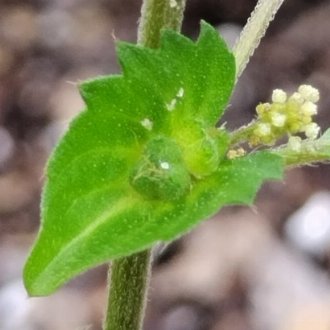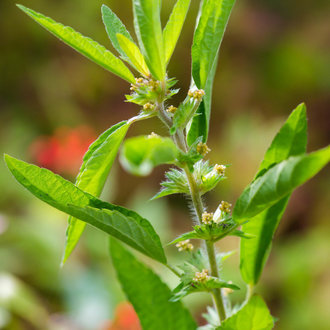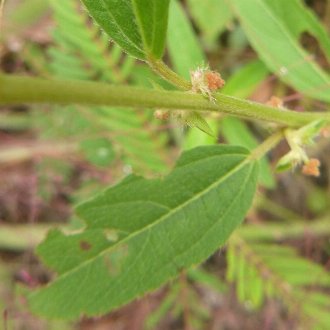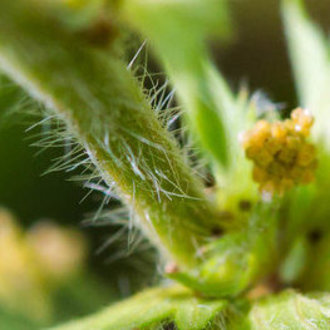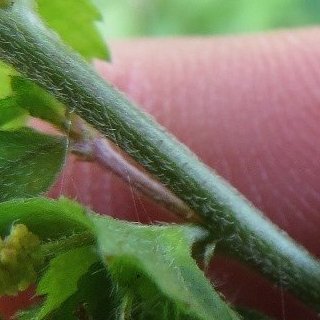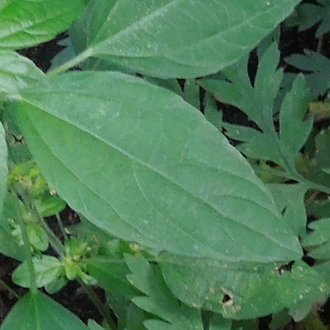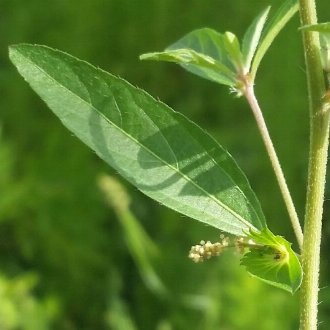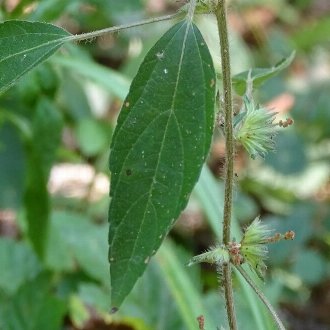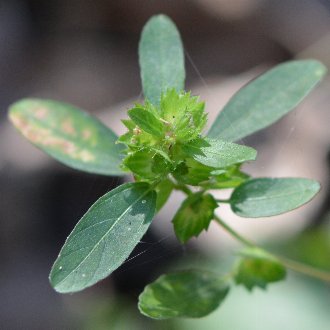Virginia Threeseed Mercury vs Slender Threeseed Mercury
This guide is under construction and has not been published yet. It may have errors. When in doubt, double-check other sources for definitive ID.These two species are easily confused as they are visually similar, overlap in range, can occur together in the same habitats, and have sometimes-overlapping characteristics of leaf shape. They can usually be easily distinguished by examining lobe length of the bracts, and/or the pubescence on the stems and bracts. There are also differences in leaf shape and petiole length. A. gracilens has a more southerly distribution, but has been expanding its range northward; it also has a greater preference for sandy and/or rocky soils and flat terrain, whereas A. virginica prefers slightly richer soils and is more likely in sloped or hilly terrain.
Virginia Threeseed Mercury (Acalypha virginica) | Slender Threeseed Mercury (Acalypha gracilens) |
An inconspicuous weedy annual native to eastern to central North America. Its name is midsleading: although it occurs in Virginia, it is more common farther north and west. | An annual native mostly to the southeastern US. |
Bract lobes are deeper-cut, usually 1/4–1/2 the length of the bract. Central lobe is not appreciably larger than others, and contains a single vein. Underside of bract is densely pubescent. Photo © , CC BY-SA 4.0. | Bracts lobes have shallower cuts, usually 1/10–1/4th the length of the bract. Central lobe is often much larger than others, encompassing multiple veins. Pubescence on underside of bract is much sparser. Photo © Abby Darrah, CC BY 4.0. |
Petioles (stem connecting leaf to the main stem) average slightly longer, usually 1/3rd to 1/4th length of leaf blade. Photo © Melissa McMasters, CC BY 4.0. | Petioles average slightly shorter, usually 1/4 of leaf blade or shorter. Photo © Christopher Warneke, Public Domain. |
Stem covered (usually densely) in stiff hairs, which project outward perpendicular to the stem. Photo © Melissa McMasters, CC BY 4.0. | Stems average less pubescent, hairs are shorter, softer, and tend to be pressed against the stem. Photo © Evan M. Raskin, CC BY 4.0. |
Leaves average slightly broader (0.5–3mm wide) and broader relative to their length. Serrations are slightly more pronounced and always visible. Photo © , CC BY-SA 4.0. | Leaves average slightly narrower (0.4–2mm wide) and broader relative to their length. Serrations are less pronounced and may even be barely visible on some plants. Photo © Jay Horn, CC BY 4.0. |
Although many plants have similar leaf tips (see above photos), some have strongly pointed tips, which can exclude A. gracilens. Photo © Samantha Heller, CC BY 4.0. | Although many plants have similar leaf tips, some plants have conspicuously blunt leaf tips, which can exclude A. virginica. Photo © Amber M. King, CC BY 4.0. |
References & External Resources
These short lists show only links helpful for ID. For a complete list of references and resources also covering other aspects of ecology, visit the links section of the full article on each plant, which is the first entry here.



